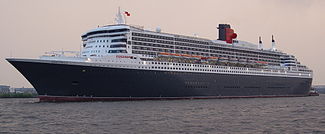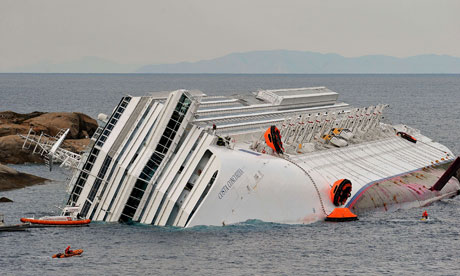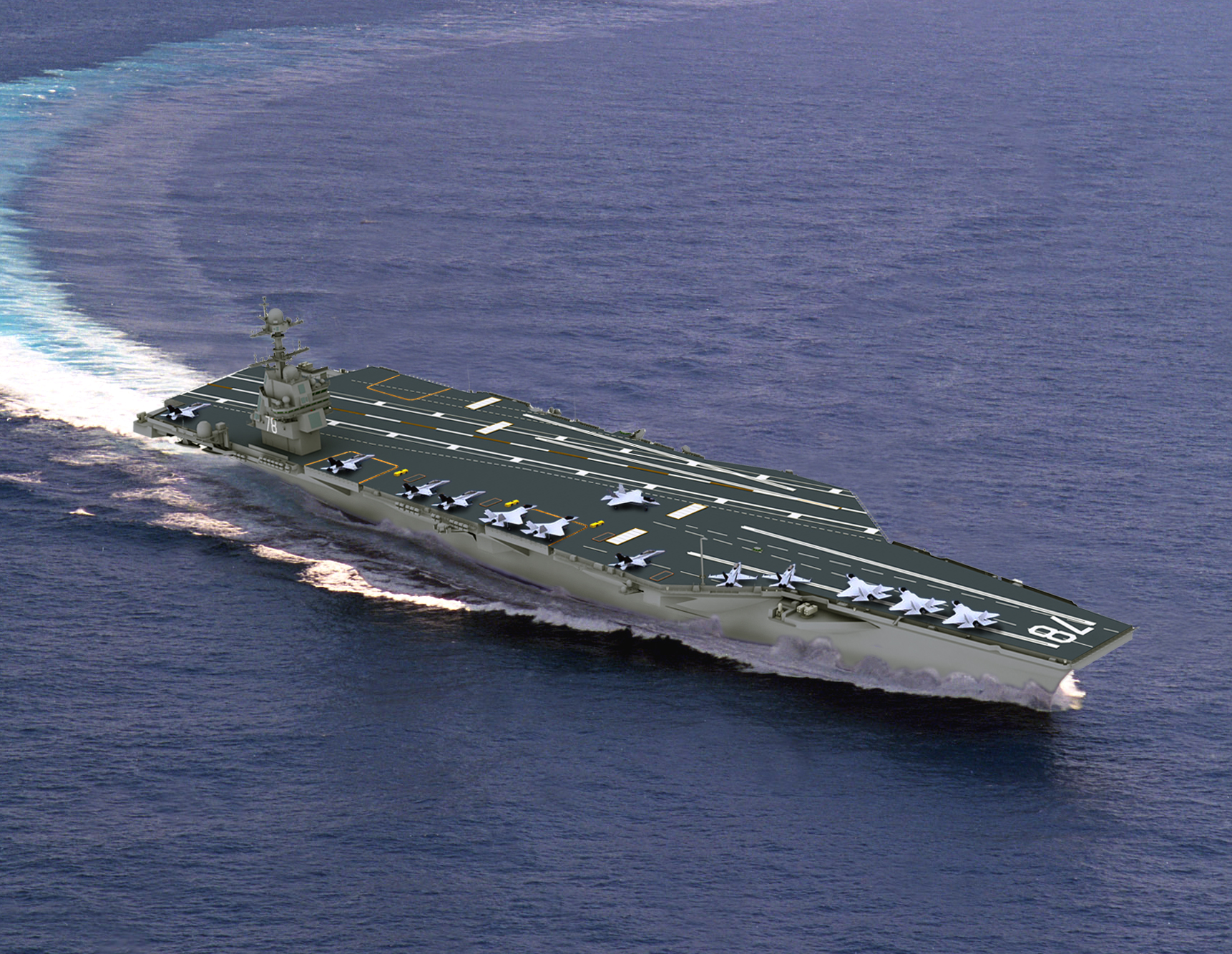General Discussion
Related: Editorials & Other Articles, Issue Forums, Alliance Forums, Region ForumsA Tale of two Ships

$900 million dollars --> http://en.wikipedia.org/wiki/RMS_Queen_Mary_2

$683 million dollars --> http://www.navytimes.com/news/2012/02/coast-guard-2013-budget-2-cutters-removed-022412d/
The USCG Bertholf is 2.7 times more expensive per foot.
tech3149
(4,452 posts)I may have mentioned it before but our military has never bought anything worth it's cost or functional for the needed task since the 50's.
I read an article a few years ago from a retired two star who worked on procurement for most of his career. He basically said as much and I've sen nothing to dispute his perspective.
The whole MIC has become a self supporting group of leeches and they are just feeding on you and me.
Lurks Often
(5,455 posts)Last edited Mon Feb 27, 2012, 10:53 AM - Edit history (1)
First the increasingly sophisticated weapons, primarily in the electronics and propulsion methods have required increasingly skilled workers to make, with the corresponding higher labor costs.
Second, military equipment is being expected to stay in service longer and longer. As an example the average plane in the 1950's was replaced by a newer aircraft every 5-7 years, since they weren't expected to last that long, they were cheaper to make. Now they are expected to stay in service, depending on type, an average of 20-30 years, with certain aircraft, such as the B-52 and KC-135 being even older.*
Third, our standard of living compared to the average Russian or Chinese worker is much higher. If you compare American equipment to British and German equipment of like type, you'll find the costs are much the same on average.
Fourth, Congress often buys the military things it does not want or funds things that aren't necessary. The second engine by GE for the F-35 isn't something the Air Force wanted, having a second engine would have required 2 different supply lines, 2 different kinds training, etc.
Yes there are cost overruns, partly due to the makers and partly due to the military and government changing their minds and coming back to the makers and adding or changing something which adds to the cost.
I'll also point out that when American equipment faces Chinese or Russian equipment on the battlefield, the Russian and Chinese equipment invariably comes off second best, although I will grant that superior training on our part certainly is factor.
*More accurately aircraft are designed to last a certain amount of flight hours, which varies from plane to plane, the higher the amount of flight hours required, the more expensive it gets.
JSnuffy
(374 posts)It's easier to snark and snap when talking out of ones 4th point of contact.
Lurks Often
(5,455 posts)The Queen Mary 2 is a luxery liner and there is nothing especially cutting edge technology wise in her design requirements. All the Queen Mary has to do is sail from place to place safely, while entertaining and feeding her passengers and crew.
The USCG Bertholf is a warship, with the warship's need for cutting edge technology in sensors and weapons and the ability to perform a myriad of different tasks.
unhappycamper
(60,364 posts)NutmegYankee
(16,199 posts)Lurks Often
(5,455 posts)madokie
(51,076 posts)that bottom one is awesome when it comes to protecting our ocean side states, ie protecting us too.
I might tell you I am a old salt and believe in needing a standing well equipped military
pintobean
(18,101 posts)That's like comparing a limousine to a tank.
NutmegYankee
(16,199 posts)Warships are heavily over designed to survive collisions and damage from battle (or for the coast guard, the worst weather).
Warship: still afloat

Cruise ship: Sunk

Red Mountain
(1,731 posts)The trick is in deciding just how much survivability is enough.
Alcibiades
(5,061 posts)Coast Guard cutters actually do things that are useful. Aircraft carriers have one mission: imperialism.

They cost $9 billion each, and they will build ten of these things in total, despite the fact that the only nations that have any real carrier capability are all our allies.
Lurks Often
(5,455 posts)A nuclear carrier has the highest SUSTAINED top speed of any surface vessel, which means it can proceed to a disaster area quickly. The carrier brings it's own power, helicopters, command & control, medical facilities, medical staff, a variety of skilled sailors and the ability to provide large quantities of fresh water every day through desalinzation of seawater. Below are a few examples of disaster relief in just the past 8 years:
(All From Wikipedia)
2010 Haiti earthquake: On 12 January 2010, just hours after the 2010 Haiti earthquake, Carl Vinson was ordered to redirect from her current deployment in the North Atlantic Ocean to Haiti to contribute to the relief effort as part of Operation Unified Response. Upon receiving orders from USSOUTHCOM, the Carl Vinson battle group proceeded to Mayport, Florida where the ships loitered offshore to receive additional supplies and helicopters. The ships arrived off Port au Prince on 15 January 2010 to commence operations.[25][26][27] CNN medical correspondent and neurosurgeon Sanjay Gupta, pediatric surgeon Henri Ford, and two Navy doctors removed a piece of concrete from the skull of a 12-year-old earthquake victim in an operation performed aboard Carl Vinson on 18 January.[28][29] In addition to providing medical relief, CVN-70's excess desalination capacity was critical to providing water to Haiti's population during the earthquake relief.[30]
2004 Tsunami: The USS Abraham Lincoln was on a port call in Hong Kong when a the 9.0-magnitude 2004 Indian Ocean earthquake struck southern Asia on 26 December 2004. To help with the international relief effort and assist with search and rescue efforts already underway, the Lincoln deployed to the hard hit western coast of Sumatra to provide humanitarian assistance. The deployment was designated Operation Unified Assistance.[9]
2011 Japan Earthquake: On 11 March 2011, Reagan was in the Korean peninsula region for a long-planned exercise off Korea, but was redirected towards Japan to provide support after the massive 2011 Tōhoku earthquake and tsunami. The ship, stationed off Sendai, was used as a floating refueling station for Japanese military and coast guard helicopters flying relief missions in the area.[29] US Navy helicopters also flew relief missions from the carrier.
Katrina: On 1 September 2005, in response to the disaster of Hurricane Katrina, the USS Harry Truman set sail for the devastated U.S. Gulf Coast. She arrived in the Gulf of Mexico on 4 September and served as the flagship for the Naval task force. While the ship's strike group (Carrier Strike Group 10) commander, Rear Adm. Joseph Kilkenny, was appointed deputy commander of Joint Task Force (JTF) Gulf Coast (also known as JTF Katrina & Rita), the ship remained anchored in the gulf and provided fresh desalinated water for the relief effort via helicopter (the actual command hub for the JTF was USS Iwo Jima). The carrier also provided support to JRB New Orleans in the form of aviation boatswain's mates and cooks to keep that station in operation.[21] Harry S. Truman returned to home port in October 2005 after five weeks of relief efforts.
Alcibiades
(5,061 posts)That's not their main job, though. With all due respect, it's laughable to maintain that this is why we maintain the world's largest carrier fleet.
The main job of aircraft carriers is to go forth and kick ass. I didn't need to "research" this: it's common knowledge. But here you go, from the 2010 NOC:
"Aircraft Carriers
Nuclear-powered aircraft carriers (CVNs) and their embarked air wings provide responsive, flexible, sustainable strike capability and capacity that does not require diplomatic access. Aircraft carriers serve as the centerpiece of carrier strike groups (CSGs) during power projection operations. In the event of conflict, multiple CSGs can aggregate, along
with other surge forces if required, to form an expeditionary strike force capable of projecting significant power at-sea and ashore.
The standard CSG force package includes a CVN, air wing, up to five surface combatants, a direct support submarine, and a combat logistics force ship. The ships provide integrated air and missile defense (IAMD) to include ballistic missile defense; and strike warfare, undersea warfare,
surface warfare, maritime security, and sustainment. When not conducting coordinated operations, these ships will often disaggregate to conduct dispersed security cooperation, counter-piracy, counter-terrorism or other maritime security operations in the theater."
It's all about combat, providing "responsive, flexible, sustainable strike capability and capacity that does not require diplomatic access." Humanitarian missions are part of US naval doctrine, but it's not why we have 11 aircraft carriers.
Lurks Often
(5,455 posts)"Aircraft carriers have one mission: imperialism." I merely pointed out some examples where you were wrong.
And thanks, I'm perfectly aware that carrier groups exist to defend this country and project power according to the orders of the politicians who run this country.
Alcibiades
(5,061 posts)in front of "mission." I doubt that aircraft carriers would be quite the same if their main mission was humanitarian.
But they are what they are because we want the president to be able to project power anywhere and everywhere without having to ask anyone's permission. Maybe you think of cases in which this enhances the power of the US, but I can't help thinking of Iraq as the defining case. So long as we maintain this rather expensive capability, it's as likely to be misused as much as it is to be used. I just don't trust the politicians who run this country, particularly given our recent history.
unhappycamper
(60,364 posts)First a little history.
Do you remember the USS Forrestal aircraft carrier that almost blew up off the coast of Vietnam and then almost sunk because of the water they poured into the hanger deck to tamp down the fire? The USS Forrestal cost the US taxpayers $189 million dollars delivered, sans people and aircraft. Source: History Channel
Nimitz-class carriers cost around $4.5 billion dollars delivered, san people and aircraft. The very last Nimitz-class carrier, the G.H.W. Bush, cost $6.8 billion dollars (lotsa overtime) delivered, sans people and aircraft. Source: military rags, wikipedia sez nothing about the cost
Here's where it gets interesting:
wikipedia sez these things will cost $13.5 billion dollars.
I read an article in either the Navy Times (or Stripes) last month that said these things should cost around $16 billion dollars.
My prediction: The USS Gerald R. Ford should cost around $40 billion dollars delivered, sans people and aircraft.
NutmegYankee
(16,199 posts)These prices are useless without converting them to FY 2012 dollars. Inflation and additional advanced technology have driven prices up. For instance, you didn't need anti missile systems in 1955. Now you need that kind of defense system and the advanced radar that goes with it. You also leave out the massive refits where new technology was incorporated or where the ship life was extended beyond original design. For instance:
18 January 1983, $550 million SLEP, designed to extend the life of U.S. aircraft carriers another 15 to 20 years.
If you convert $189 million in 1955 to 2011 dollars, it would be $1.58 billion. Add to that the skyrocketing cost of metals, labor, and energy and modern prices are not that unreasonable.
You keep ignoring the basic stuff in your hatred of the US military.
Alcibiades
(5,061 posts)to infer a hatred of the military. It is worthwhile to ask, 20 years after the end of the USSR, whether we need to forever maintain a Cold War era military capability. I'm sure that these carriers can do amazing things, but it's patriotic to ask, in a nation that was founded by folks who did not believe in standing armies, whether this sort of thing is worthwhile.
NutmegYankee
(16,199 posts)But the constitution grants congress the power to provide and maintain a navy.
My problem with the poster is that he constantly slimes the services. He attacks all acquisition, often forgetting that machines do wear out and need replacement. He then, like in this case, uses wildly inaccurate cost numbers to attack any proposed replacement. I'm a Navy guy, so it pisses me off more that he uses false figures on ships, often twice over actual, to bolster his attacks. Granted I consider all surface ships as targets. ![]()
Alcibiades
(5,061 posts)We sure do need a Navy. I'm just always thinking about what possible threat there is and drawing a blank. When you look at the navies of the world, I think we could probably cut ours by 25% and still be top dog.
One useful thing I did learn is that the navy maintains itself at current levels to deter not any actual rival, but any eventual rival. The prospect of a naval arms race with the US is supposed to be so expensive that it acts as some sort of deterrent. So we are in a perpetual arms race with ourselves. In a world where they are about to take a chainsaw to vital functions of government, it's worth asking if this is sutainable. The UK asked that question 50 years ago, and they seem to be doing--well, about the same as we are, actually.
Alcibiades
(5,061 posts)The first one cost more because of start-up costs and research, and it's claimed that future ships will cost less.
For me, though, the proper question is whether we need 11 of them. If these are to be the most capable in the world, why so many? Why replace older carriers on a 1-1 basis? Part of the reason why we have so many wars is because we can. If you build these things, they will be used.
Lurks Often
(5,455 posts)there are NEVER 11 carriers at see at any one time. Check out the link: http://www.globalsecurity.org/military/ops/where.htm
There are 4 currently that are operationally ready/active, including the carrier forward deployed to Japan.
2 more are training up for their next deployment
1 just came back from deployment
4 more are in various stages of overhaul/upgrade
So if things truly hit the fan, figure at least 1-2 weeks to get the 2 carriers training up out to sea
Probably 2-4 more weeks to get 1 of the carriers just ending overhaul and the post deployment carrier back to sea.
The remaining 3 in overhaul would probably take several months or more, depending where they are in the overhaul/upgrade cycle, to get back into active service.
We have gone into at least 4 wars unprepared and often with obsolete equipment: Spanish-American War, WWI, WWII and Korea. It's almost a certainty that a lot of lives could have been saved if we could have invaded Normandy in 1943.
And as for the military being at Cold War levels, umm nope, all branches of the Armed Forces are at some of their lowest levels since before WWII.
Alcibiades
(5,061 posts)Some of the most intractable wars have, in fact, been fought with our larger, post-WWII military. It's silly to say that we were "caught unprepared" for the Spanish-American War when that was a war of choice against a declining empire that was, if anything, less prepared than we were.
I know the history. My family was career military back when there was no peacetime military to speak of, and before and since. I'm not talking about personnel, but the budget (and, presumably, capability) which just keeps going up.
My bottom line is that, since Iraq, we cannot trust the next GOP president with any new toys. They will be abused, and people will die needlessly.
Lurks Often
(5,455 posts)Then you have a different interpration of history then I do. Here is a fact, the US Navy is at it's smallest level since WWII: http://www.history.navy.mil/branches/org9-4.htm#1945
